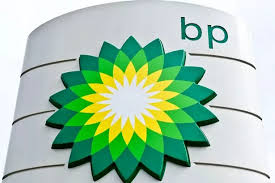BP share price surges as oil rally and strategic shift ignite investor optimism

BP share price surges as oil rally and strategic shift ignite investor optimism
After a sluggish start to 2025, BP’s share price is finally showing signs of momentum. The British oil giant, which had lagged the broader FTSE 100 for much of the year, is now climbing as renewed investor confidence, rising oil prices, and bold strategic decisions begin to reshape its outlook.
BP’s Rebound and Market Movement
As of October 23, BP’s shares traded around 431.8 pence in London, reflecting a 2.5% jump from the previous close, while its New York-listed ADR rose to $34.32, mirroring the positive sentiment in global markets. Although BP’s stock has risen only about 4.6% year-to-date — well below the FTSE 100’s 14.5% surge — the latest developments suggest the tide may be turning.
The catalyst? A renewed rally in crude oil prices. Brent crude futures spiked by nearly 5% to $64.35 per barrel following new U.S. sanctions on Russian oil giants Lukoil and Rosneft, along with an unexpected decline in U.S. crude inventories. The supply squeeze and robust demand have reignited bullish sentiment across the energy sector, and BP is riding that wave.
BP’s Bold Shift: Refocusing on Oil Over Offshore Wind
In a major strategic pivot, BP recently announced it would halt development of its U.S. Beacon offshore wind project, a 2.6-gigawatt venture initially launched with Japan’s JERA. Citing soaring costs and an increasingly hostile regulatory environment, the energy giant said it would suspend operations and lay off its U.S. offshore wind staff.
This move, while controversial among environmental advocates, signals BP’s renewed focus on core oil and gas operations. The company is doubling down on projects with high returns, such as its newly approved $5 billion offshore oil development in the Gulf of Mexico, while maintaining aggressive share buybacks — including 3.75 million shares repurchased on October 22 alone.
Analysts view BP’s recalibration as pragmatic. By prioritizing profitable hydrocarbons while maintaining selective investments in low-carbon energy, BP appears to be charting a more balanced and sustainable growth path. “BP is returning to its strengths,” one analyst noted, “focusing on cash flow, shareholder value, and disciplined spending.”
Investor Sentiment and Analyst Forecasts
Market watchers are cautiously optimistic. BP currently trades at roughly 13 times 2025 earnings with a dividend yield near 5.7%, offering what many call an attractive value play in a volatile market. The average 12-month analyst price target sits at 457.5p, implying about 10% potential upside.
However, risks remain. The company’s upcoming Q3 2025 earnings report on November 4 will be a key test of its strategy. Investors are watching closely for updates on dividend sustainability, buyback plans, and cash flow resilience. Analysts warn that if oil prices fall back below $55 per barrel, BP could face pressure to scale down shareholder payouts — something the company has done before during weaker cycles.
Still, optimism prevails. With oil rebounding and BP’s management showing financial discipline, many experts believe the stock could regain lost ground. A sustained oil rally could easily push the share price into the 450–480p range, bringing BP closer to its 52-week highs.
Long-Term View: Between Transition and Tradition
BP’s current strategy is a careful dance between energy transition goals and the realities of profit-driven operations. The firm remains committed to net-zero targets by 2050 but is taking a slower, more economically viable route. In the short term, investors appear to favor this pragmatic approach — a return to basics after years of costly renewable ambitions.
As the energy landscape continues to evolve, BP’s ability to balance growth, profitability, and sustainability will define its next chapter. For now, the company seems to have regained its footing, and investors are watching closely as it steers through a volatile but promising horizon.
FAQ
1. Why did BP halt its U.S. offshore wind project?
BP paused the Beacon Wind project due to rising costs, supply chain issues, and an unfavorable policy environment in the U.S., particularly under current administration policies.
2. How has BP’s share price performed in 2025?
BP’s stock has climbed about 4.6% so far this year, underperforming the FTSE 100, but recent oil market gains have lifted investor sentiment.
3. What is BP’s dividend yield for 2025?
BP offers a dividend yield of approximately 5.7%, which remains among the most attractive in the UK energy sector.
4. What are analysts predicting for BP’s share price?
The consensus 12-month price target is around 457.5p, indicating about 10% upside from current levels.
5. Is BP still investing in renewable energy?
Yes, but selectively. BP is prioritizing profitable, lower-risk ventures and slowing down on capital-intensive renewables until market conditions improve.

